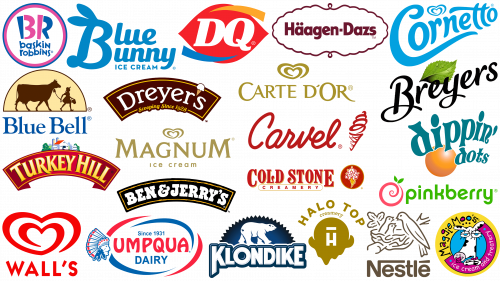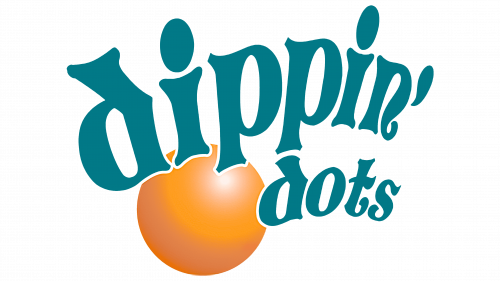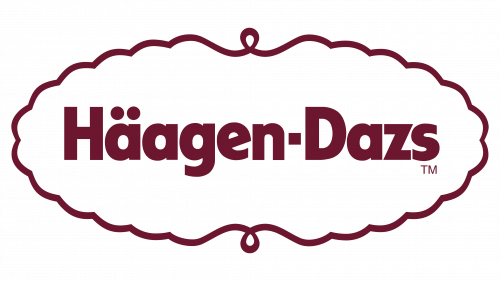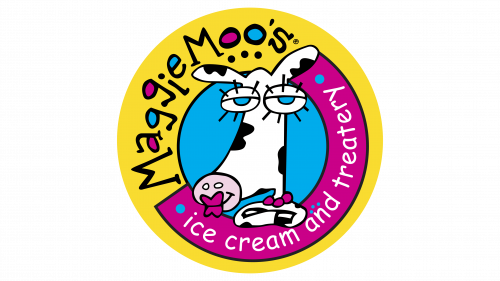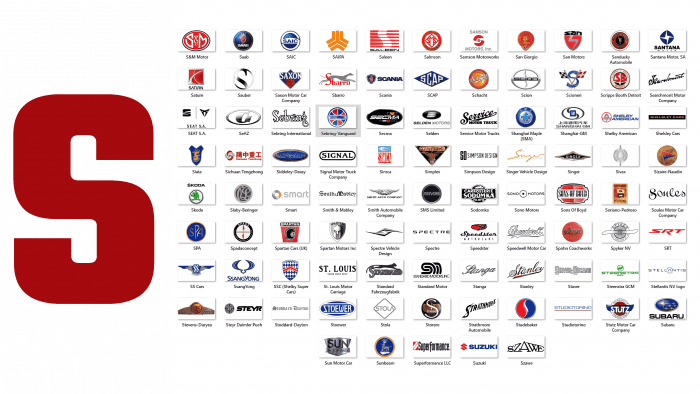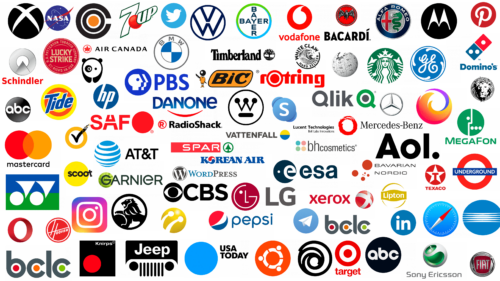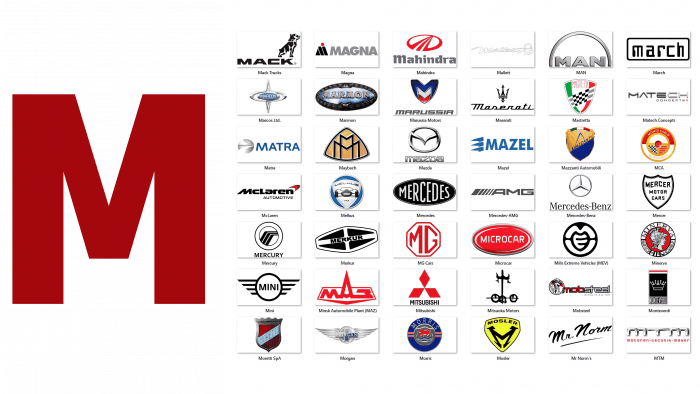Ice cream captures the hearts and tastes of people around the world, which knows no borders and cultural barriers. Originating in ancient China during the Tang Dynasty, this delicious frozen dessert has evolved over the centuries, inspiring various companies to create unique variations.
The focus will be on well-known American ice cream companies and the strength of their visual branding. Each company’s emblem will be carefully analyzed for how its design elements have contributed to the brand’s success.
America offers many frozen dessert options, each represented by colorful logos. These logos are an integral part of the respective companies’ identities, serving not only to identify but also to connect with consumers.
There is a strong emphasis on the ability of visual branding to influence potential customers to make a purchase. Companies invest heavily in creating emblems that are not only aesthetically pleasing but also reflect the core values and essence of the brand.
Baskin-Robbins
Baskin Robbins, recognized as one of the colossal titans of the global ice cream industry, has more than 7,500 outlets spread across the globe. Its story began in 1946 when two different ice cream cafes merged into one.
The founders of the brand were Burt Baskin and his brother-in-law Irv Robbins. The two entrepreneurs were already in the ice cream business separately, with Baskin offering 21 flavors and Robbins offering 10. The merger of their endeavors naturally resulted in a diverse palette of 31 flavors.
This significant number – “31” – is not just historical trivia, and it is originally incorporated into the modern branding of Baskin Robbins. This subtle hint can be traced in the brand monogram “BR,” in which the digital designation is embedded.
Visually, the Baskin Robbins emblem radiates playfulness and accessibility. Its lowercase sans-serif font gives the brand an aura of friendliness and friendliness, making it clear that every customer is greeted with warmth and friendliness. The choice of blue and pink colors in the logo is noteworthy. These colors, traditionally associated with boys and girls, respectively, carry a broader meaning: Baskin Robbins is a paradise for everyone, regardless of age or gender.
Ben and Jerry’s
Ben and Jerry’s, founded by two enthusiasts – Jerry Greenfield and Ben Cohen – in 1978, has become a hallmark of ice cream. The brand originated from a humble partnership and was later acquired by global giant Unilever, expanding its horizons beyond its original boundaries.
Ben and Jerry’s distribution geography is undoubtedly vast, spanning every continent and more than 615 specialty stores. The recognizable jars filled with a variety of delicious flavors adorn the shelves of many supermarkets, making it a favorite of many.
An important element of the brand’s identity is its logo. Ben & Jerry’s emblem is a lively and playful word mark adorned with a distinctive slab-serif font.
The white hue of the wordmark is not just a design move. It subtly conveys the brand’s commitment to high quality and purity of ingredients. It is framed by an elegant black banner with a bright orange border, further emphasizing the brand’s energetic spirit. Notably, the color orange is often associated with enthusiasm, passion, and creativity – attributes that fit well with Ben and Jerry’s innovative approach to creating unique ice cream flavors.
Blue Bell Creameries
Blue Bell Creameries, established in 1907 in the heart of Texas, is a testament to the time-honored tradition of ice cream making in the United States. This well-known company began making butter and ice cream, marking its territory in the dairy industry. With the advent of the mid-twentieth century, there was a significant change in the trajectory of the brand. Blue Bell decided to hone its expertise by leaving butter production and fully immersing itself in the world of ice cream. This strategic pivot proved fruitful, and today, the brand ranks third in ice cream sales in the United States.
Upon closer inspection, the Blue Bell Creameries logo showcases the brand’s rich history and values. Its design references a bygone era, evoking a sense of trust and age-old reliability. The emblem is based on a charming illustration: a young girl, immersed in innocent fun, leading a cow along a path. This image is not just aesthetic, and it carries a deeper meaning. It points to the brand’s long tradition, embodying the pure delight associated with ice cream and the legacy that Blue Bell has built over the years.
Blue Bunny
Among the myriad of American ice cream manufacturers, Wells Enterprises stands out primarily for its standout product: blue rabbit ice cream. Functioning under the overall Well’s brand, the company prides itself on offering a variety of flavors to suit a wide range of taste preferences.
The Blue Bunny Ice Cream brand identity has undergone a number of evolutions. The latest version of the logo is characterized by a modern style, differing significantly from its older counterparts. The current logo is characterized by a predominantly blue color, which often evokes a sense of coolness and freshness. This choice of hue perfectly matches the icy delicacy that the brand offers.
The original design of the logo cannot be overlooked either. The initial letter “B” of the word “Blue Bunny” is transformed with fancy touches: a pair of vertical ears and a crest symbolizing a rabbit. This design element gives the logo a whimsical touch, making it memorable and in line with the essence of the brand.
Breyers
Founded in 1866 in Pennsylvania, it is one of the longest-standing ice cream brands in the United States. The story of its creation is a classic entrepreneurial story: William A. Breyer, the mastermind behind this popular brand, started his ice cream venture right out of his own home. You can imagine the Pennsylvania streets of the time, where Breuer sold his ice cream using a simple horse-drawn wagon. This humble beginning started the brand’s amazing journey that continues today.
The Breyers logo is a combination of elegance and simplicity that perfectly captures the essence of the brand. A leaf adorns the logo, emphasizing the brand’s commitment to using natural ingredients. It symbolizes purity, freshness, and nature’s best offerings – all of which are essential elements in the creation of Breyers’ famous ice cream. The emphasis on nature is complemented by the logo’s typeface, which is designed in a font style that exudes luxury and nobility. The font choice is reminiscent of handwritten letters from bygone eras, bringing to mind tradition, authenticity, and reliability.
With its logo and rich history, the Breyers brand invites consumers to enjoy not only the taste but also the heritage of a brand that remains true to its roots and evolves with the times.
Carte D’Or
Carte D’or stands as an epitome in the realm of ice cream brands. Its journey began in 1978 in the picturesque landscapes of France. Over time, its presence unfurled across the borders to become a sensation in the United Kingdom and Ireland. Its early days were primarily centered on meeting the demands of professional caterers, shedding light on its unwavering commitment to quality right from its inception.
The logo of Carte d’Or plays a crucial role in representing the brand’s ethos. It exudes a sense of luxury and extravagance. The gold hue chosen for the logo isn’t merely for visual appeal but is deeply symbolic. It reinforces the unmatched quality and luxury perception the brand wants its patrons to associate with its products. Complementing the rich gold is the pristine white, which is evocative of their ice cream’s silky and creamy texture, ensuring a delectable experience with every scoop.
Carte D’or shares a design element with another eminent brand, Wall’s. The heart-shaped emblem present in their logos suggests a universal love for ice cream, transcending brands and boundaries. This subtle similarity nods to the collective passion for frozen treats shared by enthusiasts worldwide.
Carvel
Traveling through the vast number of ice cream brands, there is another layer to the ice cream universe: ice cream parlor logos. Among these, one emblem that has etched its place in the American dessert scene belongs to “Carvel.”
A subsidiary of Focus Brands, Carvel distinguishes itself from other ice cream shops with its signature offerings. The franchise is renowned for its delectable ice cream cakes and the irresistibly smooth texture of its soft-serve variants. Upholding a commitment to quality, Carvel boldly positions itself as offering the “Freshest ice cream” in the United States.
The Carvel brand has undergone many changes since 1929. The brand’s visual journey has seen several modifications, and its current iteration stands out in the crowded ice cream parlor segment. What makes the Carvel logo particularly noteworthy is its bold choice of the color red for its entirety. This choice is unconventional because ice creams usually evoke imagery of cooler shades.
The color is just one aspect of its design brilliance. The logo artfully integrates swirling designs, both in its representation of the ice cream and in its wordmark. These swirls mirror the delightful twirls of soft serve and encapsulate the brand’s essence, capturing the imagination of those with a penchant for sweet indulgence.
Cold Stone Creamery
Cold Stone Creamery stands alongside giants such as Dairy Queen among American fast-food establishments specializing in ice cream. Founded in 1988, the brand has carved out a niche for itself by offering an extensive palette of ice cream flavors. What sets Cold Stone Creamery apart is its unique ability to personalize each customer’s experience. Despite the variety of the menu, which includes various dishes, the crowning product of the company is undoubtedly ice cream.
A glance at Cold Stone Creamery’s logo plunges one into the brand’s rich heritage and commitment to tradition. The brand values its roots, and the emblem exudes a deep sense of heritage. The bold font is hard to miss, indicating the brand’s strong presence in the market. The eye-catching font is accompanied by an animated ice cream cone that breathes life into the logo. It hints at the brand’s approach to ice cream – a combination of excitement, creativity, and delight.
The choice of colors further emphasizes the brand’s affiliation with fast food. The combination of red and yellow is reminiscent of classic fast food hues, bringing thoughts of warmth, hunger, and comfort.
Cornetto
Delving deeper into the realm of well-known ice cream brands, Cornetto is worth noting. This ice cream, which occupies a prominent place under the Wall’s Heart brand umbrella, is best known for its signature cone. The etymology of its name is rooted in Italian, where “Cornetto” translates to “little cone,” indicating the characteristic shape of the treat. The origins of this beloved dessert are rooted in Italy, where it first captured hearts and tastes.
The dessert’s universal appeal has its own twist: Cornetto goes by different names in different countries around the world, reflecting its adaptability to different cultures and markets.
If you look at the Cornetto logo, you’ll notice that the letter “C” has a heart-like swirl embedded in it, perhaps a tribute to Cornetto’s affiliation with the heart of the wall. The italicized typography radiates an aura of luxury, ensuring that the brand is perceived as a luxury treat. The intentional narrowing of the wordmark to one side is not just a design element but a reminder of the distinctive cone shape that Cornetto represents. This clever design play ensures the brand’s memorability and reaffirms its heritage in the world of ice cream.
Dairy Queen
Dairy Queen, with its logo, is a recognizable symbol of delicious frozen treats in the collective memory of many, especially in the United States. Despite operating as a fast food establishment, the brand’s frozen treats have left an indelible mark in the hearts of its loyal fans.
Dairy Queen dates back to 1940 and has grown steadily over the decades to carve a niche for itself in the world of ice cream. Its journey from humble beginnings to its current fame speaks to its commitment to quality and the unrivaled experience it offers.
Dairy Queen’s modern logo is both eye-catching and symbolic. Central to the design is a pure white monogram against a backdrop of lip-like lips, an artful allusion to the gustatory delights the brand offers. The bright orange and blue colors framing the text are not just aesthetically pleasing. They symbolize the diversity of the brand’s offerings: the warmth of ready-to-eat meals combined with the coolness of frozen treats. It’s a visual representation of Dairy Queen’s culinary spectrum, emphasizing that the company caters to both ends of the temperature spectrum.
Dippin’ Dots
In the world of traditional ice cream, Dippin’ Dots brings a unique twist to the world of frozen treats. Founded by Kurt Jones in 1988, the brand has taken an innovative approach to ice cream making by utilizing the liquid nitrogen flash freezing method. This method transforms small portions of ice cream into colorful spherical balls, which differentiates the brand from conventional frozen desserts.
The brand’s presence has expanded significantly, and the unique treats are now available in about 14 countries. This uniqueness comes with certain challenges, primarily special storage requirements. Frozen ice cream requires special temperature conditions, which does not allow it to be used in supermarket freezers and limits its sale in specialized outlets.
The visual embodiment of the brand ethos is the Dippin’ Dots logo. Its design is entirely in keeping with the quirky nature of the product. The orange dot is a clear indication of the brand’s commitment to innovation and freshness. At the same time, the word mark creates a sense of movement and liveliness reminiscent of letters that seem to dance across the page. This energetic and colorful logo captures the essence of the product and the brand’s unique place in the frozen treats segment.
Dreyer’s
Dreyer’s Grand Ice Cream Holdings has a rich history spanning nearly a century. Founded in 1928, the brand is firmly established in Oakland, California, where it is still headquartered today. In the decades since, thanks to parent company Nestlé, the delicious frozen treats have been distributed around the globe.
A closer look at Dreyer’s visual style turns out to be an eye-catching logo designed as a banner. The brand’s name is elegantly spread throughout, and an ice cream cone cleverly replaces the apostrophe in the word “Dreyer’s.” The choice of the bright yellow hue is not accidental: it reflects the joy and happiness their products bring to consumers. It is complemented by a whimsical font that epitomizes the brand’s innovative spirit and its commitment to creating delicious ice cream.
A nostalgic charm is provided by the inscription “Scooping since 1928”, which testifies to Dreyer’s unwavering legacy of ice cream making.
Häagen-Dazs
Häagen-Dazs, synonymous with luxury in frozen desserts, traces its roots back to the American dream of Rosa and Ruben Mattus. The brand took its first steps in the Bronx, New York, in 1960 and introduced the world to just three flavors of ice cream. Over time, the brand has expanded its global presence and assortment by introducing ice cream in the form of bars, decadent cakes, refreshing sorbets, and creamy gelatos.
A crucial element that defines the brand’s identity is its logo, which embodies the quintessence of luxury and elegance. The Häagen-Dazs logo is a testament to the brand’s relentless pursuit of perfection. The logo uses a sleek sans-serif font to emphasize the brand’s modern and sophisticated character. It is framed by a simple yet purposeful border reminiscent of a seal to ensure that each product is of the highest quality.
The deep burgundy hue used for the wordmark serves a dual function. On the one hand, it emphasizes the brand’s luxurious image, and on the other hand, it evokes a sense of richness, warmth, and indulgence, perfectly harmonizing with the sensations that Häagen-Dazs products are known to provide.
Halo Top
Halo Top Creamery, which debuted in 2012, is rapidly gaining popularity, becoming a favorite for those looking for more waist-sparing alternatives. The brand’s global presence is also evident, with its products on store shelves in many countries, such as the United States, Canada, and New Zealand.
The appeal of this brand lies not only in the taste but also in its health-conscious approach. Halo Top Creamery has successfully reduced calories by adding the natural sweetener stevia to the mix, giving traditional ice cream a slightly healthier appearance. With this careful combination, consumers don’t have to compromise on flavor while keeping their diet in mind.
The Halo Top Creamery logo, which reflects the brand’s aesthetic, combines simplicity and elegance. Central to its design is the company’s name, elegantly combined with a distinctive gold motif. This emblem, resembling the top of an ice cream cone, is surrounded by the letter “H,” symbolizing “Halo.” The addition of a thin line above the “H” further emphasizes the brand’s name and embodies its essence. This design, while minimalist, effectively conveys the premium and sophistication of the brand, allowing it to stand out in a competitive market.
Klondike
Klondike stands out from the vast number of ice cream brands in the United States because of its individuality. Instead of being a recognized company that makes traditional ice cream, Klondike is known for its novelty product, the Klondike bar. This treat first appeared in 1922, thanks to the Islay Dairy Company in Youngstown, Ohio.
Inspired by the cool climate, the brand was named after the Klondike River in Canada. This name encapsulates the essence of the product – a chilled, refreshing treat that reflects the coolness of the river of the same name.
Klondike’s visual identity is designed to echo the brand’s core characteristics. The logo is dominated by an icy white wordmark enclosed in a blue outline, symbolizing the frosty pleasure of the product. Reinforcing this cold motif is an image of a polar bear trudging through a snowy terrain. This image reinforces the cold theme and brings to mind thoughts of adventure and exploration, similar to the thrilling experience of biting into a Klondike bar.
MaggieMoo’s
Founded in 1989 in the bustling city of Kansas City, the MaggieMoo ice cream parlor chain has entered the annals of U.S. dessert parlors. The chain, made up of independent franchise stores, became a hub for dessert lovers, offering a wide variety of sweet treats, with ice cream being chief among them.
In its heyday, the MaggiMoo’s chain had more than 400 stores, testifying to its widespread popularity and the appeal of its assortment. The trajectory of the brand’s development testifies to its successful perception and adaptation to the different taste preferences of the American population.
A distinctive feature of MaggiMoo’s is its corporate identity, carefully designed with the interests of its target audience – children – in mind. The MaggiMoo’s logo is imbued with elements of fun and whimsy, epitomizing the joy and exuberance that the brand promises with every serving of its desserts. The unconventional term “treatery” brings warmth and hospitality to the logo, suggesting that visitors are waiting for a paradise of delicious treats.
The central place in the logo is occupied by a bright character designed to be instantly memorable and attract attention. This character, combined with the brand name, serves as a visual beacon designed to entice young customers and draw them into the world of MaggieMoo’s delicious offerings.
Magnum
Magnum has carved a niche for itself in the ice cream industry and has become a globally recognized brand. Its roots are in Aarhus, Denmark, where it was created and developed under the wing of Frisko, which later became an important part of the Unilever conglomerate.
The Magnum brand sails under the Unilever flag. The subtleties of branding unite it with the Wall’s brand, as evidenced by the iconic heart-shaped emblem that adorns Magnum’s packaging. This emblem, symbolizing love and passion, reflects the universal adoration for this frozen treat in the best possible way.
But Magnum’s branding is not limited to the generic heart-shaped emblem. Its standalone logo is characterized by an assertive and commanding word combination that epitomizes strength and dominance. Every bite of Magnum ice cream is an unforgettable journey, and this commitment to unrivaled quality and enjoyment is reflected in the brand’s visual identity.
Nestlé
Headquartered in Switzerland, Nestlé is undoubtedly a global titan in the food and beverage industry. Since its founding in 1866, the company has established itself as a manufacturer of products ranging from dairy products to chocolate, from frozen foods to a specialized line of ice cream. The company’s extensive product portfolio doesn’t end there: it’s behind big names like Moven Pick and Dreyers, further expanding its influence in the food manufacturing industry.
If you delve into the origins of Nestlé’s corporate identity, the company’s name itself is intriguing. It goes back to one of the company’s founders and means “nest” in German. Such nomenclature is not just an arbitrary choice; and it is deeply symbolic. The Nestlé logo clearly reflects this essence. The emblem, depicting chicks in a nest, nurtured by their mother, indicates care, nourishment, and a protective embrace. It is not just a symbolic brand image; and it has historical significance. This image is closely linked to the Nestlé family crest, intertwining the company’s corporate identity with its fundamental heritage.
Nestlé not only provides consumers with quality products but also manages to evoke a sense of trust, reliability, and warmth, which is perfectly reflected in its emblem.
Pinkberry
Appearing in 2005, Pinkberry quickly became a prominent brand in the frozen dessert industry in the United States despite being relatively new compared to other well-known brands. The rapid growth of this franchise is evidenced by its impressive territory of about 260 outlets located in 20 countries. Its growth trajectory is a testament to its successful adaptation to the changing preferences of the world’s dessert lovers.
What sets Pinkberry apart from its competitors is its emphasis on personalization. Consumers appreciate the ability to customize frozen treats with a wide range of toppings to satisfy both traditional and adventurous tastes.
The logo depicts a stylized pink berry harmoniously blended with the brand’s signature ice cream swirl, symbolizing the brand’s core product. Complementing this image, the green hue of the wordmark subtly conveys freshness and purity. This thoughtful color choice underscores Pinkberry’s commitment to using natural ingredients, reinforcing consumer confidence in the brand’s quality and authenticity.
Turkey Hill
Turkey Hill, formally known as Turkey Hill Dairy, is prominent in the American market, especially for its wide range of beverages, frozen treats, and ice cream. The company was founded in 1931 during the economic downturn caused by the Great Depression. Turkey Hill’s ownership has changed over time, first being acquired by Kroger in 2019. – by private equity firm Peak Rock Capital.
While the name “Turkey Hill” may seem unconventional to some for a brand specializing in ice cream and beverages, the design and elements of its logo serve as a fitting testament to that. The design elements of the logo seamlessly intertwine with each other, creating the atmosphere of a classic dairy farm. The traditional word mark in the form of a banner reflects the brand’s deep heritage and the richness of its past.
The graphic image of a dairy farm on the banner gives the design an even more distinctive feel. This image emphasizes the brand’s core business and reinforces its identity so that customers immediately associate Turkey Hill with the freshness and authenticity reminiscent of a traditional dairy farm.
Umpqua Dairy
Umpqua Dairy, founded in 1931, is a testament to the strength of the business in the United States. Its products have become a staple in many supermarkets across the country, a testament to the brand’s consistent quality and heritage. The company’s deep history can be seen in the surviving remnants of the 1936 wooden building.
Umpqua Dairy remains owned by the founding family, allowing the values and traditions established by the founders to be preserved and passed down from generation to generation. This close-knit ownership of the company symbolizes a commitment to quality and preserving a cherished heritage.
Umpqua Dairy’s logo is designed to reflect its rich history. Central to its design is the brand name, complete with the key year of its creation – 1931. This inclusion evokes a sense of nostalgia, reminding customers of the brand’s long heritage in the dairy industry.
The depiction of a Native American has raised questions and debates in recent years, drawing attention to broader issues of cultural representation and sensitivity in branding. As with many other well-known brands, finding a balance between historical roots and contemporary perceptions remains an ongoing process.
Wall’s
Unilever Group’s portfolio includes Wall’s, a well-known ice cream and frozen dessert brand with British roots. Rooted deep in history, Wall’s began a century ago, in 1922. But ice cream wasn’t always a frosty treat: the genesis of the brand was a butcher’s company. The name Wall’s isn’t just a brand; it’s a legacy passed down through generations.
Familiarizing yourself with the brand’s emblem allows you to understand its ethos and what it stands for. At the heart of Wall’s emblem is an elegant swirled shape that is a direct reflection of the creamy texture that results when the cream is spiraled during the whipping process, giving birth to delicious ice cream. The swirl is not arbitrary, and it flows seamlessly into the shape of a heart. This heart is not just a visual element; and it symbolizes the passion with which the brand creates its products and the joy and love that consumers receive from them.
Beneath this eye-catching emblem is the company’s brand identity. Using a straight sans-serif font, the name “Wall’s” stands out, clearly identifying the brand. The simplicity of the font complements the detailed swirl above it, creating a harmonious balance in the design.
The Power of Logos in the Ice Cream Industry
Both in the U.S. and around the world, the list of well-known ice cream brands is extensive and varied, giving frozen treat lovers a wide range of choices. These brands take a variety of approaches to creating a visual identity, typically adhering to one of two main thematic currents. On the one hand, brands such as Carte d’Or and Haagen Dazs choose visual symbols that exude sophistication and enjoyment. Their logos often feature elegant fonts and classic imagery designed to evoke a sense of luxury. On the other hand, brands like Baskin Robbins opt for a more whimsical and lighthearted style, choosing bright colors and playful graphics to resonate with a different segment of consumers.
These thematic approaches serve the specific purpose of engaging and captivating the brand’s target audience. Whether striving for elegance or playful exuberance, the carefully chosen logos of these ice cream brands are not just decorative elements but tactical tools designed to convey the essence of the brand and foster emotional engagement with the consumer.
By reviewing and analyzing this selection of ice cream logos, you can learn about the different artistic styles and get an idea of the intricacies of the techniques used by these companies.
